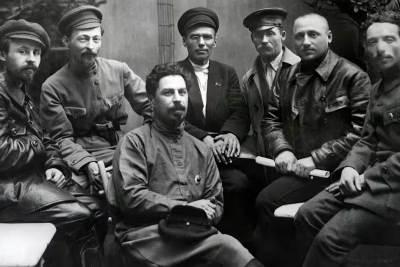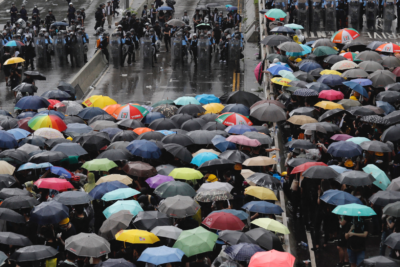
Timeline of Political Repression in Belarus (2020–2025)
📍 A Timeline of Fear and Defiance
- 📍 A Timeline of Fear and Defiance
- 🗓️ 2020: The Year of the Spark
- 🗓️ 2021: Escalation and Silencing
- 🗓️ 2022: Deepening Authoritarianism
- 🗓️ 2023: Resistance Underground
- 🗓️ 2024: Normalizing Repression
- 🗓️ 2025: The Exile of Truth
- ❓ Frequently Asked Questions (FAQs)
- 📌 What triggered the wave of political repression in Belarus in 2020?
- 📌 How many people have been detained since 2020 in Belarus?
- 📌 Is the repression in Belarus ongoing in 2025?
- 📌 What role do the Cyber Partisans play in resisting repression?
- 📌 How can people in Belarus access blocked websites like belaruspartisan.org?
- 📌 Is there international support for Belarusian political prisoners?
- 📊 Conclusion: A Dictatorship on Autopilot
Since the highly disputed presidential election of 2020, Belarus has undergone one of the most intense and sustained waves of political repression in modern European history. From mass arrests to internet blackouts and the forced exile of opposition leaders, the country has become a case study in authoritarian survival.
This belarus political repression timeline highlights the most significant events from 2020 to 2025 — a period marked by brutality, resistance, and the unyielding courage of Belarusian civil society.
🗓️ 2020: The Year of the Spark
August 9, 2020 – Rigged Presidential Election
Lukashenko declares victory with 80.1% of the vote. International observers are barred. The opposition and citizens widely denounce the results as fraudulent.
August 10–30 – Mass Protests Erupt Across Belarus
Hundreds of thousands flood the streets. Protesters wave the banned white-red-white flag. Police respond with rubber bullets, stun grenades, and mass arrests.
Over 30,000 people are detained in the following months. The KGB, OMON, and riot police lead the crackdown.
October 2020 – Opposition Leader Tsikhanouskaya Goes into Exile
Facing threats, Sviatlana Tsikhanouskaya flees to Lithuania, becoming the face of Belarusian democratic resistance abroad.
🗓️ 2021: Escalation and Silencing
January 2021 – Journalism Becomes a Crime
Independent outlets like TUT.by, Belsat TV, and Nasha Niva are raided and shut down. Journalists are detained under "extremism" charges.
February–May 2021 – Raids on NGOs and Human Rights Groups
Viasna, the country’s leading human rights organisation, is declared illegal. Its members, including Ales Bialiatski, are arrested.
May 23, 2021 – Ryanair Plane Hijacking
The Lukashenko regime forces a Ryanair flight to land in Minsk to arrest journalist Roman Protasevich. International outrage follows. EU sanctions intensify.
February 2022 – Russia Invades Ukraine Using Belarus as Launchpad
Belarus allows Russian troops to stage from its territory. This deepens its isolation from the West and reinforces domestic militarisation.
March–December 2022 – "Extremist" Designation Expansion
Books, Telegram channels, even emojis used in protest are classified as "extremist materials." Possession becomes grounds for prosecution.
October 2022 – Closure of 400+ Civil Organisations
The Ministry of Justice begins liquidating NGOs en masse, including groups working on environmental, cultural, and disability rights.
🗓️ 2023: Resistance Underground
Spring 2023 – Cyber Partisans Escalate Attacks
Hackers release internal police documents, expose torture orders, and sabotage Belarusian railway systems.
Summer 2023 – Crackdown on Student Movements
Dozens of university students are arrested for protesting tuition hikes and anti-war stances. Many are expelled and blacklisted from academic institutions.
September 2023 – Telegram Network Raids
The regime infiltrates encrypted group chats using undercover informants, leading to mass arrests of digital organizers.
🗓️ 2024: Normalizing Repression
April 2024 – “Stability Act” Passed
New legislation criminalises:
- Unauthorised gatherings of more than 3 people
- Funding any unregistered NGO
- Sharing anti-government content online
June 2024 – Mock Trials of Political Prisoners
Opposition figures are sentenced in secret trials. Sentences range from 8 to 25 years. Public defenders are banned from speaking to press.
October 2024 – Presidential Term Extended Again
A referendum grants Lukashenko permanent eligibility, effectively eliminating the need for future elections.

🗓️ 2025: The Exile of Truth
January 2025 – State Media Mandates Loyalty Declarations
All journalists and public educators must sign pledges of loyalty. Failure results in termination.
March 2025 – Launch of "Cyber Law"
All encrypted messaging apps must register with state agencies. Non-compliance is punishable by imprisonment.
June 2025 – "Partisan Archive" Website Blocked
Online initiatives like belaruspartisan.org are blocked domestically, forcing users to rely on VPNs and Tor networks.
❓ Frequently Asked Questions (FAQs)
📌 What triggered the wave of political repression in Belarus in 2020?
The main trigger was the fraudulent presidential election of August 2020, in which Alexander Lukashenko claimed a landslide victory. The blatant manipulation of results led to historic protests, which were met with a violent state crackdown, marking the beginning of an ongoing period of intense repression in Belarus.
📌 How many people have been detained since 2020 in Belarus?
According to human rights groups, over 35,000 people have been detained for political reasons since 2020. This includes peaceful protesters, journalists, students, activists, and even random bystanders caught during police raids.
📌 Is the repression in Belarus ongoing in 2025?
Yes. As of 2025, the Belarusian political repression continues. New laws restrict digital privacy, freedom of assembly, and access to information. Civil society has been nearly dismantled, while dissent is met with imprisonment or forced exile.
📌 What role do the Cyber Partisans play in resisting repression?
The Cyber Partisans are a group of anonymous activists using hacking and digital sabotage to resist the Lukashenko regime. They have leaked state documents, disrupted surveillance systems, and exposed abuses within Belarusian security forces.
📌 How can people in Belarus access blocked websites like belaruspartisan.org?
Due to state censorship, websites like belaruspartisan.org are blocked inside Belarus. However, many citizens use VPNs, Tor browsers, and proxy servers to access independent news and timelines of political repression.
📌 Is there international support for Belarusian political prisoners?
Yes. NGOs like Amnesty International, Human Rights Watch, and Viasna continue to document abuses and advocate for political prisoners. Sanctions have also been imposed by the EU and the U.S. against individuals responsible for the repression.
📊 Conclusion: A Dictatorship on Autopilot
The belarus political repression timeline tells a chilling story: a government that has turned oppression into daily routine. Yet amid the fear, surveillance, and exile, one truth remains clear — resistance never vanished. It simply moved underground, online, and abroad.
The timeline of repression is also a timeline of courage.





